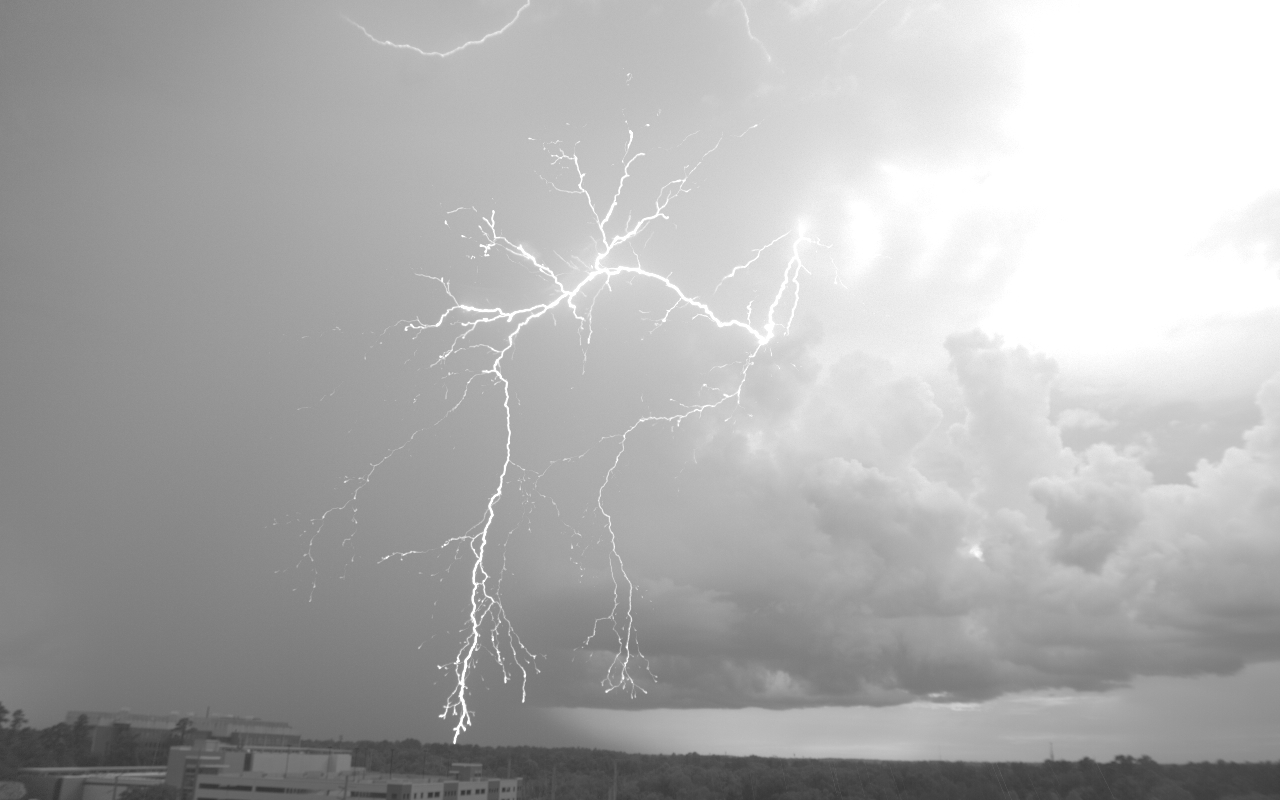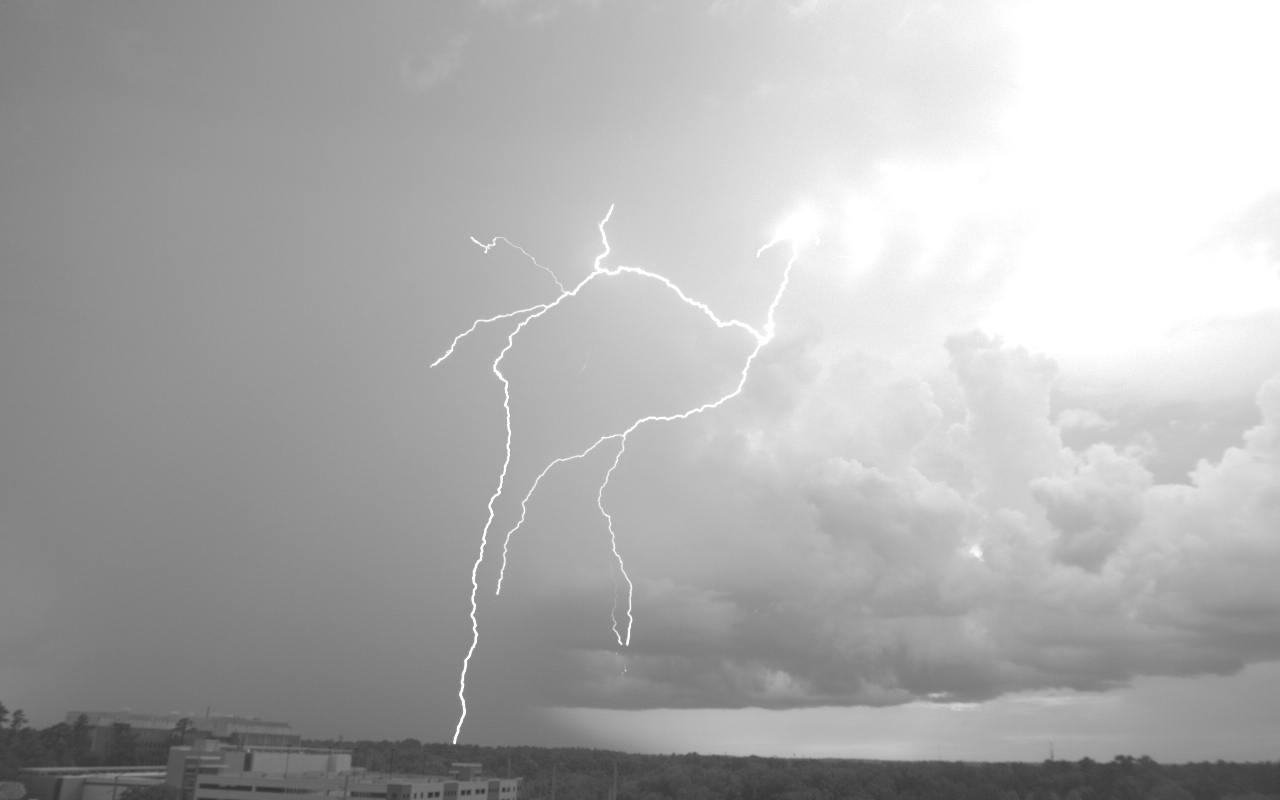Flash Photography: 'Bolt from the Blue' Caught on Camera

Lighting can strike the ground miles away from the towering thunderstorms that produce it, a phenomenon called a "bolt from the blue."
A high-speed camera run by the University of Florida's Lightning Research Laboratory caught an unusual bolt from the blue that zapped some trees in Gainesville on June 8, 2013. The lightning flash skipped some of the key steps that researchers have worked out for how lightning travels from cloud to ground.
"The mechanisms of how a lightning flash strikes an object are still very poorly understood," said lead study author Manh Tran, a doctoral student at the University of Florida. "We don't know whether we can call this rarely observed or common. But we are doing more observations so we can hopefully shed some light on the physics behind lightning."
Lightning is one of the deadliest yet least understood weather phenomena, according to the National Weather Service.
Here's the basic model for how cloud-to-ground lightning works: A positive or (more commonly) negative charge jumps from the cloud, tracing a path called a stepped leader. The leader searches blindly for the ground, branching out through open air. As the leader, or charge, nears the surface, a strong opposite charge builds in the ground, reaching upward meet the leader. The two collide in a violent, high-energy discharge. Lightning's flash is actually a return stroke, as the electric current races back up the stepped leader. [Electric Earth: Stunning Images of Lightning]
In a bolt from the blue, the leader leaps sideways out of the thundercloud, then angles down toward the surface. For people on the ground, the bolts seem to come out of clear air. "People look up and see blue sky, and then boom, there's lightning," Tran said.
The detailed video of the Gainesville lightning never showed a hot, bright upwards leader. Instead, the researchers saw a rare glimpse of streamers, positively charged electrical channels stretching upward from the ground. "This was unusual and a little bit different than what is generally thought in the literature," Tran said.
Get the world’s most fascinating discoveries delivered straight to your inbox.
And no one at the lightning lab has ever seen an upward leader turn on its path toward the ground, the researchers report. Lightning often kicks out another leader if there's enough charge left in the cloud. In the case of the recorded bolt, the tip of the second leader bent up, turning back toward the cloud, just after the big flash (or return stroke) zoomed toward the sky. "We don't really understand the physics of that yet," Tran told Live Science.
The study was published Sept. 19 in the journal Geophysical Research Letters.
Between 5 to 10 percent of the 25 million cloud-to-ground lightning flashes in the United States each year strike in Florida. Some parts of the state see 40 hits per square mile.
Email Becky Oskin or follow her @beckyoskin. Follow us @livescience, Facebook & Google+. Original article on Live Science.

 Live Science Plus
Live Science Plus






